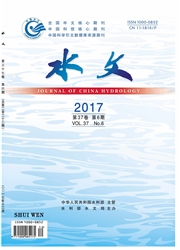

 中文摘要:
中文摘要:
以呼伦贝尔羊草草甸天然割草场为研究对象,从土壤微生物数量、微生物生物量和酶活性等指标,探讨土壤微生物对短期施肥的响应及指标间的关系。结果表明,施肥显著地增加了土壤真菌数量,随着施肥水平增加,真菌和放线菌数量均有增大的趋势,而细菌数量逐渐减小。施肥显著增加了土壤微生物生物量碳和微生物熵,而对微生物生物量氮、土壤蔗糖酶、脲酶和过氧化氢酶无显著性影响。施肥后土壤真菌数量与微生物生物量碳呈极显著正相关,细菌与放线菌呈显著正相关。低水平处理(N 3.5 g·m^-2+P 1.7 g·m^-2)比较适合土壤微生物的繁殖。施肥后草地土壤微生物之间关系密切。微生物数量对短期施肥的响应最为敏感,其次为酶活性和微生物生物量;其中,真菌的响应程度最高。
 英文摘要:
英文摘要:
aking a mown Leymus chinensis meadow in Hulunbuir as the research object, we studied soil microbial response and microbial relationship under different shortterm fertilization treatments by measuring soil microbial quantity, microbial biomass and enzyme activity. Results showed that: (1) Fertilization significantly increased the quantity of soil fungi. With increasing fertilization levels, the quantity of fungi and actinomycetes showed an increasing tendency, but the bacterial quantity decreased. (2) Fertilization significantly increased soil microbial biomass carbon and microbial quotient, while the microbial biomass nitrogen, soil sucrase, urease and catalase were not significantly affected. (3) The soil fungi quantity was significantly positively correlated with soil microbial biomass carbon after fertilization, and the bacterial quantity was significantly positively correlated with the quantity of actinomycetes. (4) Low fertilization level (N 3.5 g·m^-2+P 1.7 g·m^-2) was suitable for the growth of soil microorganisms. A close relationship was found between the soil microorganisms after fertilization. Microbial quantity was the most sensitive to short-term fertilization, secondly was the enzyme activity and microbial biomass. The fungi had more sensitive response to fertilization.
 同期刊论文项目
同期刊论文项目
 同项目期刊论文
同项目期刊论文
 期刊信息
期刊信息
